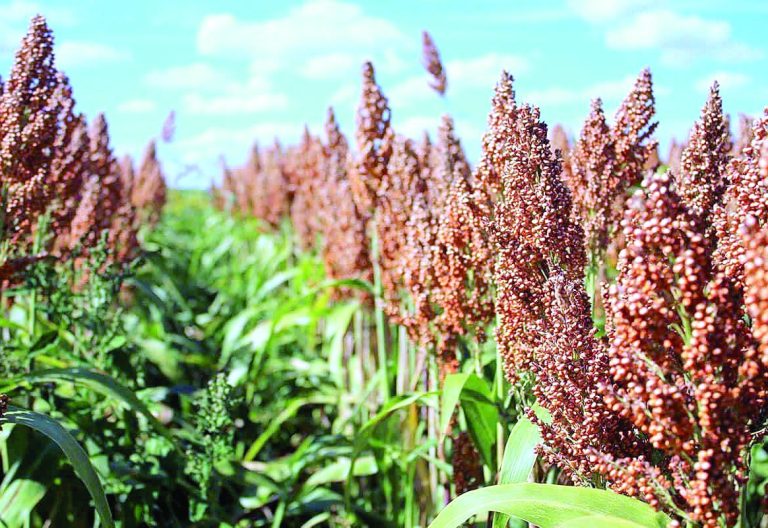Africa must bring back neglected crops

Scientists and agricultural experts have always extolled the inherent resilience of indigenous crops to drought and extreme weather conditions. Often, they perform better than introduced crops such as maize under changing climates, making them crucial for food security on the continent.
Neglected crops including grains such as sorghum, millet and vegetables such as amaranth, eggplant, and kale (sukuma wiki), are also known as ‘indigenous’, ‘lost’, ‘native’, ‘orphan’, ‘traditional,’ or ‘underutilised’ crops or as ingredients in ‘forgotten foods.’
These terms capture various aspects of these important crops. They are indigenous or native to Africa and have traditionally been the basis for highly nutritious foods, but over time, they were lost or forgotten by many and thus orphaned. They are now underutilised by farmers and producers and, likewise, neglected by consumers, plant breeders, policymakers, and donors.
Calls to bring back neglected crops have been voiced over the past several decades in the African continent, but the idea gathered momentum in 2023, when the United Nations declared it the International Year of Millets.
Naturally suited
Lysiane Lefebre, David Laborde and Valeria Piñeiro, writing in a blog to mark the International Food Policy Research Institute (IFPRI)’s fiftieth anniversary, noted that as the food and climate crises continue to cause suffering around the world, one under-appreciated solution could be a powerful tool to alleviate both crises in Africa, one of the worst affected regions: neglected crops.
In their blog advocating the Bring Back Neglected Crops campaign, the writers make a case for reintroducing and scaling up cultivation and use of these crops, which offer promising ways to address both the food and climate crises – particularly for Africa.
One of the indigenous or neglected crops’ advantages relates to climate change adaptation. Many traditional African crops have evolved to thrive in harsh environments with limited water availability, making them naturally suited to the increasing drought conditions brought on by climate change.
Another advantage is their nutritional value. These crops are often highly nutritious, providing essential vitamins and minerals that can be crucial for combating malnutrition in affected regions. Sorghum, millet, finger millet, cowpea, Bambara groundnut, amaranth, and fonio are considered vital indigenous African crops, with potential to combat climate change impacts.
Despite their benefits, indigenous crops continue to face challenges in their adoption. The widespread adoption of indigenous crops has been hampered by lack of access to improved seeds, limited knowledge about modern cultivation techniques, and a shift towards less nutritious more Westernised diets, favouring non-traditional crops.
That is why there is need for research and development to enhance their rate of adoption. Scientists are increasingly working to improve the yield and quality of indigenous crops through research and development efforts to maximise their potential in addressing climate change-related food insecurity.
Climate change is affecting indigenous African crops in various ways. Unpredictable rainfall patterns can negatively impact the yield of traditional crops that rely on specific rain patterns. Rising temperatures can lead to stress on crops, potentially reducing their productivity. Changing climate conditions can facilitate the outbreak and spread of new pests and diseases which can further affect crop yields.
Potential solutions to these challenges include promoting crop diversification. Integrating a variety of indigenous crops into farming systems can help mitigate risks associated with climate variability. By developing climate-resilient varieties, research programmes can aim at improving existing indigenous crops varieties to enhance their resilience to extreme weather events.
Another important solution to address the challenges facing indigenous crops is by supporting traditional knowledge systems through promoting and integrating local knowledge about climate-adaptive farming practices can be crucial for effective adaptation strategies.
Phased out
Lefebre, Laborde and Piñeiro note that neglected crops were traditionally cultivated for subsistence but were gradually replaced by crops better suited to commercial farming during the twentieth century. The globalising agri-food sector grew increasingly specialised, intensified and concentrated. Along with modernisation and urbanisation, the search for ever more efficiency and productivity led to the dominance of very few -arguably too few- food sources.
“A handful of staple crops replaced the once-wide range of subsistence crops; of crop varieties, disappeared over the 20th Century. In 2020, only three plant crops (maize, rice and wheat) accounted for 41 per cent of the world’s caloric intake.
“The growth in the production area of these three main crops in Africa has far outpaced that of traditional cereals like sorghum and millet. Neglected crops were abandoned as producers focused on fewer, more profitable crops and as consumers preferred more convenient crops that could be more easily processed into food products,” they noted
So why bring back neglected crops? Part of the answer lies in increasing the number of food options and diversifying markets in order to create a more secure global food supply in the face of more frequent shocks.
The multiple crises of recent years have revealed many weaknesses in food systems and pushed food prices up and millions of people into hunger. These crises have hit Africa especially hard.
More than one in five Africans, or 278 million people suffer from chronic hunger. Food price inflation in Africa exceeded 20 per cent in June 2022- its highest level since tracking of the indicator started.
Climate change impacts are especially significant. On the one hand these are already affecting food security and nutrition and are expected to continue reducing crop productivity; on the other, food systems are responsible for 34 per cent of global greenhouse gas emissions.
Again, these impacts fall heavily on Africa. Extreme weather events in the Horn of Africa, for example, were expected to worsen food insecurity and hamper progress toward reducing malnutrition, raising the number of people facing crisis or worse to 23-26 million if the drought extends for a fifth season.
Expanding the use of neglected crops can help to diversify agriculture and food systems and introduce a greater variety of foods into global supplies- including more nutritious cereals, fruits and vegetables, and roots and tubers.
“In 2023, the US Department of Sate in partnership with the African Union, the FAO, and several global agricultural institutions, launched the Africa-focused Vision for Adapted Crops and Soils (VACS).
VACS, which seeks to accelerate research and development for traditional crops and help revive the region’s long-depleted soils, had received funding pledges worth $200 million as of August 2024.
“It’s an important turning point, its proponents say – not only because it’s pumping an unprecedented flow of money into foods that have long been disregarded – but because it’s being driven by the US government, which has promoted farming policies around the world that have helped entrench maize and other food commodities at the expense of local crop diversity,” Jonathan W. Rosenarchive said while writing in the Massachusetts Institute of Technology (MIT) Review last October














